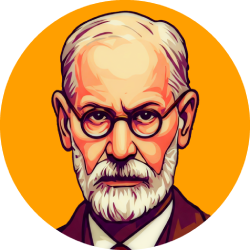When we think of Sigmund Freud, we often come to mind the figure of a serious and distant man who dedicated himself to understanding the mysteries of the human mind. However, it is important to remember that Freud also had a complex relationship with the lay public and the press, which played a significant role in the dissemination of his ideas.
Introduction to psychoanalysis to the general public
It was through his writings and lectures that Freud sought to present psychoanalysis to the general public. He knew that for his theory to become widely accepted, it was necessary to explain it clearly and accessible. Thus, he wrote books such as “The interpretation of dreams” and “totem and taboo”, which became important references in the dissemination ofpsychoanalysis.
These texts not only presented Freud’s theories didactically, but also told stories and examples that illustrated how psychoanalysis could be applied in everyday life. This helped create a bridge between the academic world and the lay public, allowing more people to understand and be interested in psychoanalysis.
The press and the popularization of psychoanalysis
The press played a key role in the popularization of Freud’s ideas. Newspapers and magazines began publishing articles on psychoanalysis, often presenting it as a new and revolutionary way to understand the human mind.
This generated both enthusiasm and controversy. Some critics accused Freud of being a “charlatan” or promoting “immoral” ideas. However, press attention also helped create a public interest in psychoanalysis, leading more people to seek information on the subject.
Public reactions and criticism
The lay public reacted differently to Freud’s ideas. Some have seen in psychoanalysis a liberating way to understand and deal with their own thoughts and feelings. Others, however, were offended or threatened by the suggestions that the human mind was influenced by unconscious forces.
Criticism of psychoanalysis ranged from accusations that Freud was “medicalizing” normal problems of life to concerns about the ethics of exploring hidden secrets and desires. These reactions reflected both curiosity and public anxiety about the new ideas presented by psychoanalysis.
Legacy and impact on popular culture
Freud’s legacy in the relationship with the lay public and the press is complex. On the one hand, he was able to popularize psychoanalysis and make it an integral part of cultural discourse. On the other hand, the controversies and criticism that his theory also generated contributed to a continuous debate on the validity and value of psychoanalysis.
Nowadays, concepts such as “Oedipus Complex” or “repression” are part of the common vocabulary, showing how Freud’s ideas have deeply penetrated popular culture. In addition, psychoanalysis has inspired literary, artistic and cinematic works, demonstrating its lasting influence on the way we think about ourselves and our relationships.
In short, Freud’s relationship with the lay public and the press was marked by efforts to make psychoanalysis accessible, facing both compliments and criticism. His legacy remains debated, but it is undeniable that he has changed the way we think about the human mind and its functioning.


